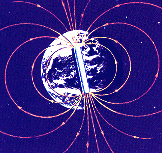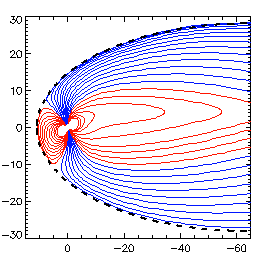 Click here for a full size | In our everyday environment, magnetic forces are of no importance and a sensitive instrument, the compass needle, is needed to detect them. That is because we, the materials we encounter in everyday life, even the oxygen and nitrogen which we breathe, are all electrically neutral. The atoms of oxygen, for instance, contain electrons with negative electric charges and protons which are positive, but the two charges balance each other andthe electric and magnetic forces cancel. Magnetic forces have almost no effect on neutral atoms. |

 Official GSFC Home Page
Official GSFC Home Page  NASA WWW Home Page
NASA WWW Home Page